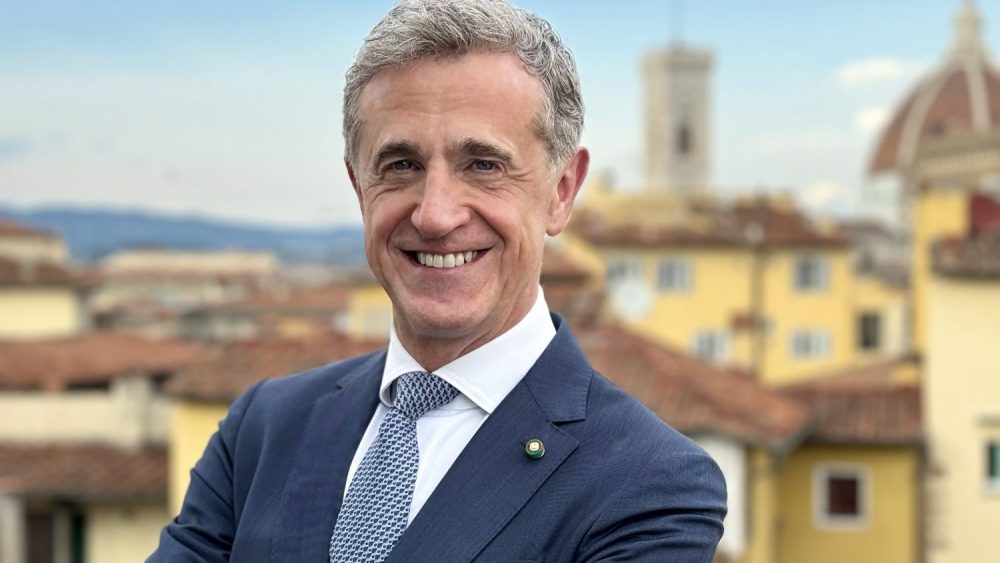
MILAN When the Ferragamo family decided to dive into the hotel business 30 years ago, they asked themselves: “What is our ideal hotel?” The answer was simple: they were in search of a place that reflected their personality, their Florentine roots, their dreams and emotions, while opening up new horizons. “Entering the world of hospitality was very important to my family as it’s very similar to the world of fashion, giving us the opportunity to create a different experience and lasting memories,” said Leonardo Ferragamo, son of Salvatore Ferragamo, on the occasion of the hospitality venture’s 30th anniversary. Since that one question was asked and answered, the Lungarno Collection, the hotel management company owned by the family, has become one of the best examples of how fashion, design and hospitality can create a happy marriage. Today, the Lungarno Collection includes Hotel Lungarno, its flagship property; Continentale; Gallery Hotel Art and Lungarno Apartments, as well as the exclusive Portrait Collection, including the Portrait Firenze, Portrait Roma and Portrait Milano. The culmination of the company’s efforts was the opening of Milan’s Portrait hotel in 2022, which came to life after years of lengthy negotiations with the city’s municipality, the local curia and the Superintendence of Cultural Heritage. The vast space was redesigned by architect Michele De Lucchi and spans over 30, 140 square feet the size of Piazza San Babila in Milan. Beyond the hotels, Lungarno Collection is also celebrated for its culinary excellence. It manages three renowned restaurants: the Michelin-starred Borgo San Jacopo, Caffè dell’Oro and The Fusion Bar & Restaurant. These are complemented by three signature bars in Florence La Terrazza at Hotel Continentale, 701 Rooftop Bar at Gallery Hotel Art and Picteau Bistro & Bar at Hotel Lungarno as well as the elegant 10_11 bar and garden restaurant in Milan. Here, Lungarno Collection’s chief executive officer Valeriano Antonioli discusses how the hospitality business has changed over the decades and what’s next for the growing collection. WWD: How has the Lungarno brand evolved? How is this part of the Ferragamo family ethos? Valerio Antonioli: At the core of this evolution lies the Portrait brand, representing the pinnacle of Lungarno’s personalized approach to luxury. With Portrait Roma, Portrait Firenze and Portrait Milano the brand redefines the guest experience breaking away from traditional standards in favor of bespoke hospitality that fosters a deep, authentic connection with each city. While Lungarno Collection benefits from the heritage of the Ferragamo family, we are not an extension of the Ferragamo fashion brand. This distinction has been key to our success. From the very beginning, our aim was not to simply translate a fashion label into hospitality, but to build a luxury hotel brand rooted in the values of timeless elegance, craftsmanship and personalized service. WWD: How has the brand struck a balance between the Ferragamo family history and building a new identity? V. A.: Our approach has always been to draw from the Ferragamo family’s cultural sensibility and tradition of innovation rather than relying on the fashion name itself. This has allowed us to develop a distinctive identity one that is deeply personal, intentionally niche and centered on creating immersive, beautifully crafted experiences in iconic locations. The Portrait brand, for example, was built from the ground up, not on instant recognition, but on substance through exquisite design, intimate service and a philosophy of tailored luxury. In the long run, we believe this foundation will lead to enduring global recognition, welcoming guests who value authenticity, discretion and a truly personal connection. WWD: As someone with international experience, as the general manager of the W Hotel in Los Angeles, as well as the general manager of the historic Diana Majestic, what were your first impressions of the Ferragamo family’s hospitality concept? V. A.: When I joined the Lungarno Collection, I learned that the [original] property [along the Arno River] was originally a 19th century residence. Leonardo Ferragamo, the company’s president, chose to transform the “old” Hotel Lugarno into something new an intimate, welcoming property that felt almost like being a guest in the Ferragamo family home. The risk-taking attitude at the time was measured and thoughtful. The goal was not to turn a modest four-star into a grand, ostentatious five-star hotel, but rather to strike a balance between modernizing an aging structure and creating something fresh and original for Florence and for Italian hospitality as a whole. WWD: How was the landscape different in 1995? V. A.: Looking back, the travel landscape of 1995 was very different from today. Most international travelers were from North America, with some from South America, Australia and Europe. Russia was just emerging from the perestroika [restructuring of former members of the Soviet Union] years. Asia, and China in particular, had not yet begun the transformations that would later make them central to global tourism. The number of ultra-luxury travelers was far smaller than it is today, and the concept of “luxury” in hospitality was still quite traditional. The era of design-driven boutique hotels such as the W Hotels or the “lifestyle hotel” movement had not yet begun. Those trends would arrive in the early 2000s, redefining the idea of a hotel as not only a place for travelers, but as a social and cultural experience in itself. In 1995, a hotel was still, quite simply, a place for travelers to stay. WWD: About 30 years ago, you were working at Grand Hotel Europe in St. Petersburg, Russia, one of the finest in Eastern Europe. What did you think, personally, about the Ferragamo family making their foray into hospitality from the world of fashion? V. A.: It was the pre-internet era, when information was spread largely by word of mouth. Word reached us that the Ferragamo family already a household name in the world of fashion had opened a hotel in Florence. Curious, I investigated further and discovered that it was not actually called the “Ferragamo Hotel,” but rather the Hotel Lungarno. The property, a four-star hotel that had been recently renovated, stood out for its remarkably elegant and inventive design. This was also the beginning of a new design era in which architect Michele Bönan worked on his first hotel project alongside Leonardo Ferragamo, embarking on a creative journey that has now spanned 30 years. The interplay of white and deep blue tones evoked the feeling of being aboard a boat on the Arno River. For many of us in the hospitality world, this became known as the very first “fashion hotel” a hotel created with a distinct design identity and a sense of style inspired by its brand. WWD: What trends are dominant in hotels today? What sort of facets of the business are growing and creating ancillary revenue? V. A.: The post-COVID-19 pandemic luxury hotel market in Italy has evolved into two distinct segments. On one side, we have the ultra-luxury properties, where the average nightly rate exceeds 1, 500 euros. On the other, the traditional five-star hotels, which maintain average rates between 800 and 900 euros. Another clear trend is the growing emphasis on wellness and longevity. Affluent travelers today are increasingly focused on extending and improving their quality of life. This means seeking experiences that combine nutrition, physical activity, relaxation and overall well- being. Many resorts and hotels are developing dedicated longevity and wellness programs for example, our own Longevity Spa in Milan which integrates holistic health practices with the luxury hospitality experience. WWD: How do you think technology and artificial intelligence will alter the hotel business? V. A.: These tools are enhancing booking systems, streamlining daily operations and helping teams work more efficiently. I believe that in the “room of the future,” smart technology will play a fundamental role but only if it simplifies the guest experience rather than complicating it. We must learn from the early mistakes of home automation, where over-engineered systems sometimes made simple actions, like turning on a light, unnecessarily complex. We are also observing the rise of a new category of traveler: the “bleisure” guest, who combines business and leisure during their stay. At the same time, a key demographic shift in Italy and across Europe the declining birth rate over the past two decades is leading to a shrinking pool of young professionals entering the hospitality and restaurant sectors. To meet this challenge, we must encourage the immigration of skilled workers and support longer careers for those already in the industry. After all, human capital remains the most important asset for any successful hotel. WWD: Is sustainability still paramount? V. A.: Sustainability continues to be a crucial trend. Hotels are increasingly focused on reducing plastic use, improving energy efficiency, promoting local resources, and obtaining certifications that demonstrate genuine environmental commitment to guests. Above all, what remains at the top of the agenda is the creation of personalized, meaningful experiences. Guests today seek authenticity, emotional connection and a sense of well-being in every aspect of their stay. Our mission in hospitality is to guide and inspire them helping them make the most of their time, so that they leave our hotels and our cities with their “shopping bag” full of memories, moments and photographs to share with their loved ones. WWD: Is Lungarno Collection considering any partnerships in and around fashion and hospitality? V. A.: For the development of the Portrait brand, finding the right location is essential. We look for prestigious buildings situated in promising financial contexts properties capable of delivering meaningful returns for all stakeholders involved. Identifying locations that meet these criteria is not easy, which is why we are actively seeking strategic partners who can help us identify and develop suitable projects in our key Italian destinations. Should we find the right partners, we are very open to exploring various forms of collaboration. WWD: Is the Lungarno Collection open to expansion? If so, in what way?.
https://wwd.com/business-news/real-estate/ferragamo-lungarno-collection-30-years-luxury-hospitality-1238361488/


